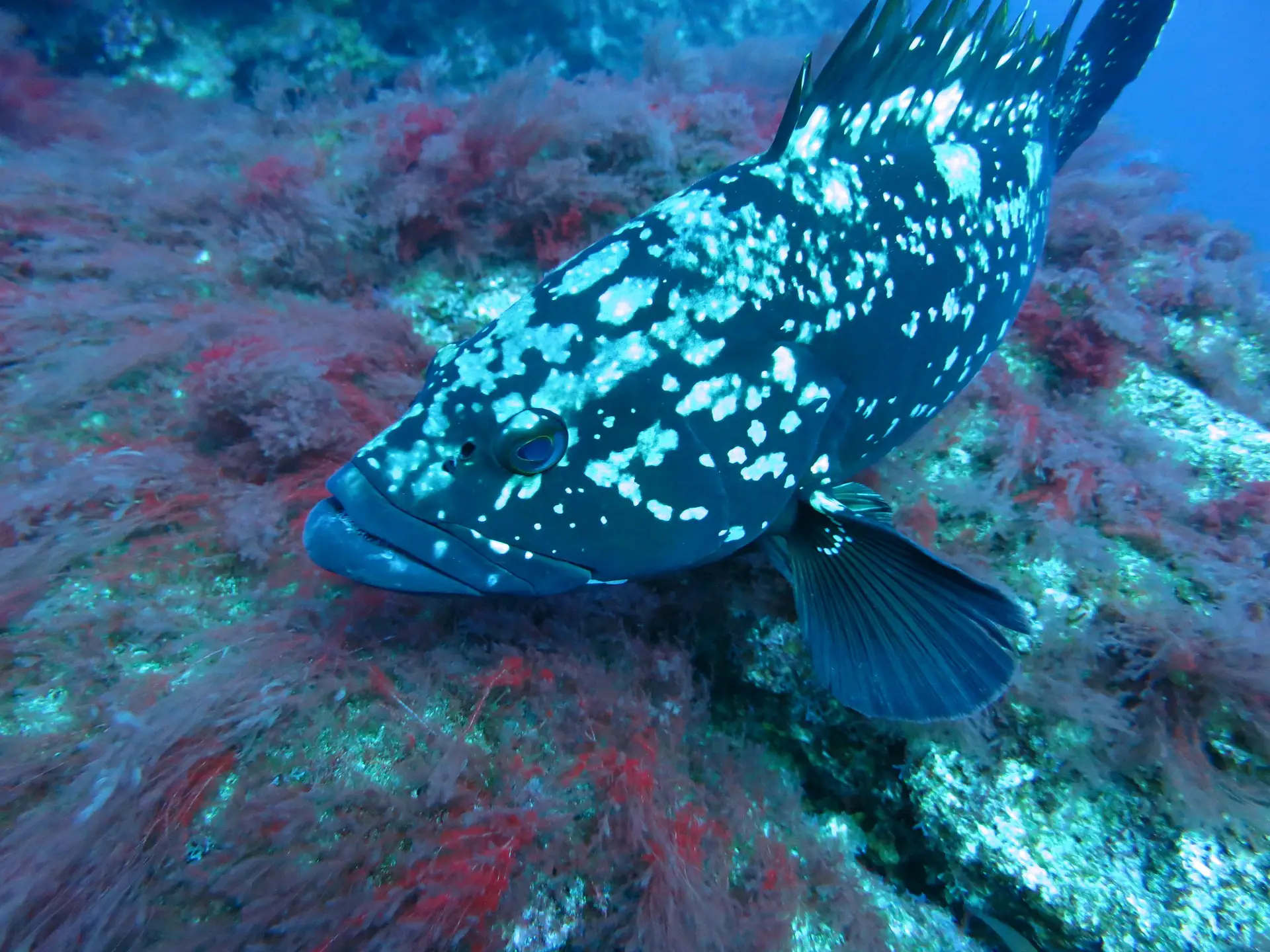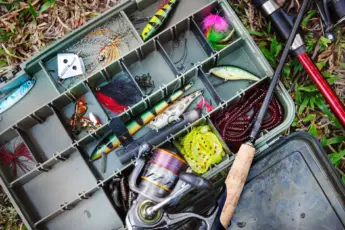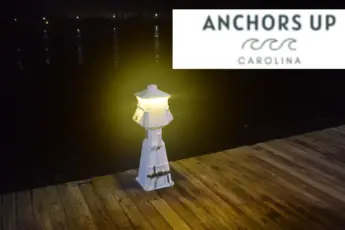The warsaw grouper, otherwise known as a giant grouper or garrupa negrita, is found off the coast of Georgia, South Carolina, and North Carolina. These grouper roam the deep waters of the Atlantic Ocean. Anglers target giant groupers because of their size, which leads to an intense fight. Heavy gear is required to battle warsaw from the depths to the side of the boat. Here is what you need to know about warsaw grouper.
How To Identify A Warsaw Grouper
When it comes to identification, the fish shares a substantial number of traits with the goliath grouper. Therefore, the warsaw grouper vs. goliath grouper are similar but the goliath is highly regulated. However, when it comes to the name, it is not known why is it called warsaw grouper.
The coloration of a warsaw ranges from dark brown in the upper portions before fading to light brown towards the belly. Pay close attention to the tail. The tail of a garrupa negrita is square. Lastly, the forward portion of the dorsal fin spines is elongated.
In regards to how big do grouper get the warrsaw fish are bohemiths compared to the vast majority of groupers.
How Big Do Warsaw Groupers Get
When asked how big do grouper get, warsaw are one of the largest in the family. In regards to warsaw fish size, the warsaw is considered a heavyweight champ. The grouper exceeds 400 pounds when fully mature. Take into consideration the challenge presented when reeling a four hundred-plus pound fish from the bottom of the Atlantic.
Despite the fish exceeding 400 pounds, the average warsaw ranges between thirty and eight pounds. However, it is not uncommon to stumble across a 100-pound warsaw.
What Is The Range Of A Warsaw Grouper
The range of the warsaw is extensive in the Atlantic Ocean. Anglers primarily catch the grouper off of Georgia, South Carolina, and North Carolina, where the fish is most heavily concentrated.
Despite the densest population residing in the southeast, anglers catch warsaw as far north as Cape Cod; however, this is infrequent.
What Is The Habitat Of A Warsaw Grouper
You won’t find warsaw in shallow offshore waters when it comes to habitat. The giant grouper roams the bottom of the ocean in depths ranging between 200 and 650 feet. Seaworthy boats equipped with twin engines are required to make long runs when reaching the fishing grounds.
When searching for warsaw in the deep waters of the Atlantic, focus your attention on ledges, drop-offs, and areas where the bottom is irregular. Excellent bottom reading sonar is necessary when locating underwater structures at depths exceeding 200 feet.
Are Warsaw Grouper Legal To Keep
The warsaw is illegal to harvest from the Atlantic Ocean. Never keep a giant grouper as the fish by law must be released back into the sea when caught in Federal waters. Possing a warsaw results in hefty fines combined with the continuation of depleting a highly endangered species.
What’s The Difference Between Goliath Grouper And Warsaw Grouper
The most significant and identifiable difference between a warsaw and a goliath grouper is the tail. The tail of a goliath grouper is round compared to the square tail of a warsaw.
It is unlikely to stumble across goliath grouper when fishing for warsaw because the goliath inhabits more shallow waters. Anglers seldom are put at risk of confusing the two species.
How Do I Get Warsaw Grouper
Despite the inability to harvest warsaw in Atlantic waters, anglers target the fish because of the challenges in locating the fish and the size. Remember, only those equipped with boats to handle deep sea fishing and make long runs can venture offshore for warsaw. When the fish comes aboard have a cooler or fish box large enough because of the warsaw grouper size.
Rod And Reel Combinations
When targeting warsaw the rod and reel combinations must be minimum in the 80-pound class. Utilize hand crank combinations for the sport; however electric deep drop combinations make the task less labor-intensive.
Tackle
When it comes to tackle 100 pound plus pound leader is required to prevent break-offs as the fish dives for cover after being hooked. Place lead weights above an 8/0 hook. The weight must be heavy enough to hold the bottom despite stiff currents.
Bait
Live bait is not necessary when fishing for warsaw grouper. Place a whole dead fish or half of a bonito or mackerel on the size 8/0 hook and send it to the bottom. Once the bait has reached the seafloor, remain patient until the grouper strikes the bait.
Best Method For Catching Warsaw
The best method for catching warsaw grouper is locating drop-offs, ledges, and contours in depths greater than 200 feet. Anchor the vessel and drop baits to the seafloorr. Move from spot to spot until the fish are located.
Are Warsaw Fish Legal To Keep
The warsaw fish or warsaw grouper is illegal to possess in Atlantic waters and cannot be harvested, filleted, and eaten. However, the fish is legal to keep in the Gulf Of Mexico. Therefore, if you plan to target giant warsaw grouper to battle and eat, focus your attention on the gulf waters during legal season.
Can You Eat Warsaw Grouper
Yes, you can eat warsaw grouper. When it comes to taste, warsaw makes excellent table fare. The fillets are thick, firm, and flake into large pieces. The best preparation methods include grilling and broiling.
The best tasting warsaw are those smaller in size because the flesh is more tender. However, ensure that the fish lies within the legal harvesting limits in gulf waters.
Are You Heading Warsaw Grouper Fishing In Your Coastal Region
For those who are equipped with a seaworthy boat, run offshore for deep waters. Hiring a fishing charter to put you on warsaw groupers is a second option. Remember to release all warsaw caught in the federal water of the Atlantic Ocean. Lastly, purchase a saltwater fishing license before dropping lines.






